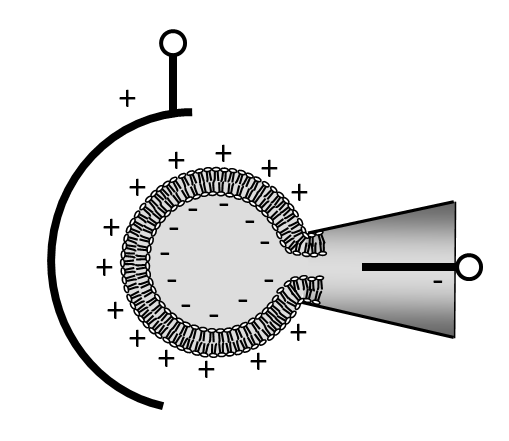Electrophysiological analysis of permeabilization processes
Commonly used electrode configurations in treatment chambers for PEF processing do not allow a direct measurement of the field-induced transmembrane voltage. This can be accomplished by applying the patch-clamp technique.
In whole-cell configuration, the tip of a glass pipette, filled with a conductive solution, is sealed to the membrane. This enables direct electrical access to the cell interior allowing voltage and current measurements across the plasmamembrane.
It could be demonstrated that membrane permeabilization can be subdivided into two states. During the pulse a strong increase of membrane conductance and a recovery within milliseconds could be observed, which can be explained by classical electroporation. With increasing number of pulse expositions, however, a steady and persistent increase of membrane conductance after pulse termination could be identified. The resulting two stage model of membrane permeabilization now can explain experimental results and observations on membrane permeabilization which didn’t correspond to models, solely based on electroporation theory.
Recent work focusses on verification of the hypothesis, whether this persistent conductance and permeability increase is caused by field-assisted phospholipid oxidation or not.

